Five More Potential Clients for Russia’s Su-57 Next Generation Fighter: From Kazakhstan to Ethiopia Military Watch Magazine Editorial Staff
May-30th-2021
A previously published article looked at the five leading potential clients for Russia’s Su-57 next generation heavyweight fighter - concluding that India, Algeria, China, Vietnam and Turkey were the most likely countries to purchase the aircraft. As the Su-57 has further matured a growing number of countries have shown interest in acquiring it for their own fleets, with Algeria reported by a number of sources to have already ordered its first squadron’s worth to replace its Cold War era MiG-25 Foxbat interceptors. More countries are expected to follow as the fighter integrates a new generation of engines and enters service in larger numbers in the Russian Air Force itself. A look at the five ‘runners up’ - the next five leading potential clients for the Su-57 or its future derivatives following the five previously discussed - is given below. The assessment is made on the basis of their current assets, budgets, foreign relations, and how well the Su-57 could fit into their existing force structures.
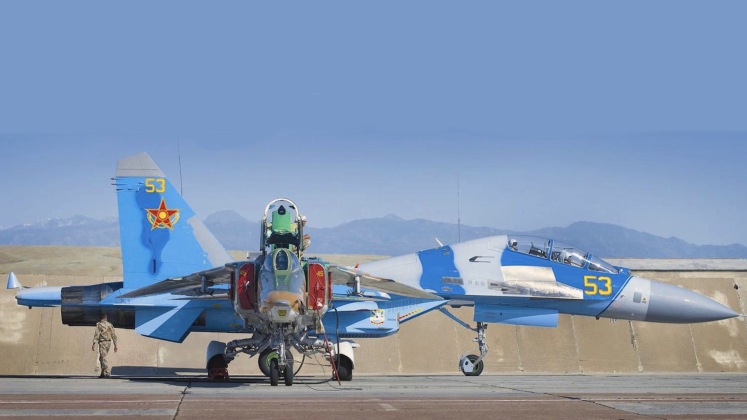
Kazakh Air Force Su-27 (back) and MiG-27 Fighters
KazakhstanKazakhstan has been the leading client for new Russian armaments in the Collective Security Organisation of post Soviet states, most notably ordering one of Russia’s most capable new fighter classes the Su-30SM to replace older Soviet era models in its fleet. The country is permitted to purchase Russian fighters as the same prices offered to the Russian Defence Ministry itself - which makes new acquisitions considerably cheaper than they would be for other clients. Kazakhstan deploys two classes of high end heavyweight combat jets inherited from the Soviet Union alongside the Su-30SM, including the Su-27 and MiG-31 Foxhound. At least one of these two, and possibly both, are likely to eventually be replaced by the Su-57 or a future derivative of the same airframe design. While Kazakhstan has no immediate concerns for the safety of its airspace, the lifespan of the Su-27 airframes is expected to be reached within a decade or so at current rates of use - with the Su-57 and Su-30SM2 being the leading choices for a replacement.
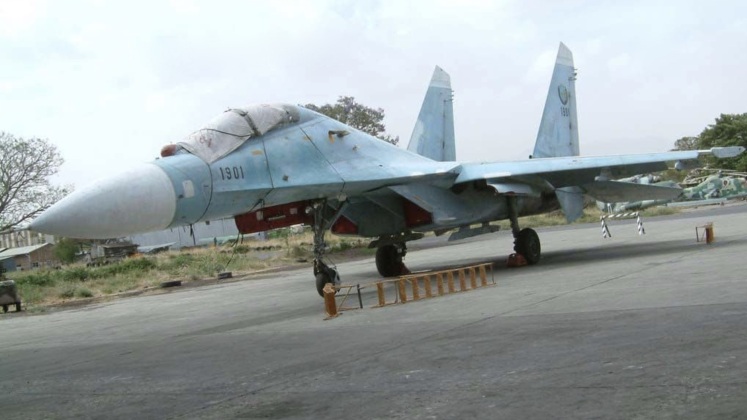
Ethiopian Air Force Su-27 Heavy Fighter
Ethiopia Ethiopia was one of the first foreign operators of the Su-27, and acquired an estimated 18 airframes in the late 1990s with the first deliveries made during its war with Eritrea. Tensions with Egypt and Sudan have meant that Ethiopia’s aerial warfare capability continues to be highly relevant, and with the Su-27 expected to be phased out of service by the mid 2030s at the latest the Su-57 remains a clear choice for a replacement. The next generation Russian fighter would ensure a qualitative edge over potential adversary fighters such as the Egyptian Su-35 and Sudanese MiG-29SE, and allow Ethiopia to strike targets deep into the territories of both countries due to the Su-57’s considerable endurance. Ethiopia’s continuous and rapid economic growth is expected to be sustained, and will make such an acquisition increasingly feasible over the coming decade despite the country allocating only a relatively modest portion of its state budget to new arms acquisitions.
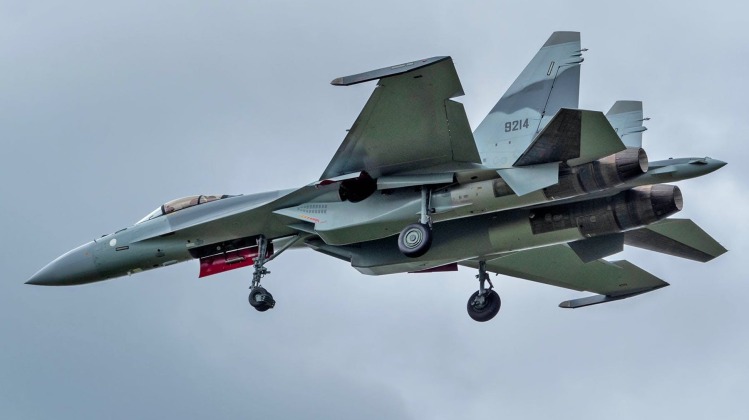
Egyptian Air Force Su-35 Heavy Fighter
Egypt Following the overthrow of its Western aligned Islamist government in 2013, Egypt emerged as a leading client for Russian arms ranging from T-90 battle tanks to Ka-52 carrier based attack helicopters. The North African country has invested particularly heavily in Russian aerial warfare systems, including MiG-29M and Su-35 fighter jets and a range of air defence systems including the S-300V4. While it has been speculated that the country could place followup orders for further Su-35s, and for lighter MiG-35 jets, it is also possible that as the Su-57 design matures it will look to acquire the newer aircraft instead of the Su-35. This would provide a more decisive advantage over rival aircraft such as the F-15EX which Israel is expected to order, and could be a more cost effective investment than acquiring the older jets. Current trends in Egyptian arms acquisitions and the reorientation of the Egyptian Air Force towards a high end capability to engage near peer adversaries makes a purchase of Su-57 fighters, or one of the airframe's future derivatives, highly plausible. Egypt has been known to purchase fighter aircraft in small quantities in the past despite the logistical burden caused by an overly diverse fleet, meaning that it may not be deterred from abandoning the Su-35 after purchasing just a single squadron to move on to the Su-57.

Russian Air Force Su-30 and Su-57 Heavyweight Fighters
Myanmar Amid fast growing defence ties between Russia and Myanmar, the Southeast Asian state’s ambassador to Russia Ko Ko Shein highlighted in 2019 that his country could be interested in acquiring Su-57 fighters. Older variants of the Russian MiG-29 medium weight fourth generation fighter currently form the bulk of the Myanmar Air Force's fleet, but the service’s modernisation program has seen unprecedented investments made in acquiring heavyweight fighters with an order for six Su-30SM Flankers placed 2018 and six to twelve more reportedly planned. With the Su-57 only available in single engine configuration, the twin seat Su-30SM could prove an effective complement for later acquisitions of the jets and help to familiarise Myanmar’s Air Force with operating high end post-Cold War fighter designs. Myanmar has also ordered a dozen Yak-130 twin seat trainer jets, which were developed specifically to train pilots to operate high end Russian fighters and would play an important role in facilitating integration of Su-57s into the country’s fleet. With Myanmar facing poor relations with the Western world, and frequent periods of tension with neighbouring Bangladesh, it could well emerge as a client for a squadron’s worth of Su-57s over the coming decade - which may be a more cost effective investment than acquiring smaller numbers of lower end aircraft.
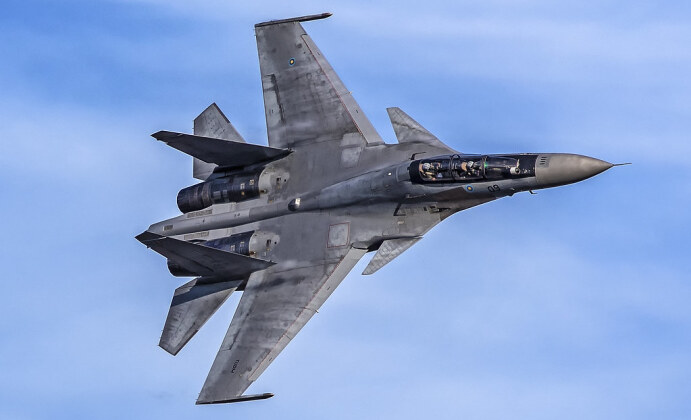
Malaysian Air Force Su-30MKM Fighter
Malaysia The Malaysian Air Force currently operates two classes of Russian fighter, including the medium weight MiG-29 and the heavier and more modern Su-30MKM. With neighbouring Singapore moving to acquire more advanced F-35 stealth jets in significant numbers from the United States, Malaysia is expected to modernise its own fleet with superior classes of Russian fighters. In December 2019 Malaysia’s Prime Minister Mahathir Mohamad elaborated on the country’s plans to modernise its air force, stating that the country was actively considering replacing older fourth generation MiG-29 and ‘4+ generation’ Su-30MKM fighters with next generation aircraft. He indicated that the Su-57 was a contender, with the possibility raised that Russia could purchase older aircraft back from Malaysia to help cover the costs of purchasing newer aircraft. A single Su-57 squadron to replace the Su-30s, and possibly more depending on how seriously the country perceives threats to its security, would be a major game changer for the regional balance of power in the air. The fighters have many very significant performance advantages over the F-35 which could compensate for their likely numerical disadvantages, although questions regarding Malaysia’s ability to match Singapore’s quality of pilot training or its network of support aircraft remain.
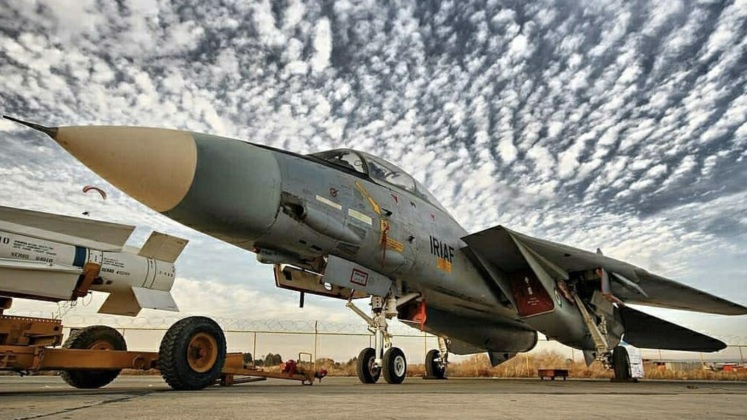
Iranian Air Force F-14 Fighter
Honorable Mention - Iran The Iranian Air Force is another possible client for the Su-57, although unlike the aforementioned countries Iran has not acquired any post-Soviet Russian fighters, nor does it deploy any Soviet era Russian heavyweight fighters that the Su-57 could comfortably replace. The country has focused investment in aerial warfare systems on fielding a wide range of drones, including advanced stealth models which have proven themselves in combat, as well as on mobile ground based air defences such as the Khordad 15. For its fighter fleet, modernisation efforts have been restricted manufacturing indigenous lightweight Kowsar fighter jets in small numbers, and to refurbishing and upgrading its fleet of 1960s and early 1970s era American fighters - namely third generation F-5E and F-4D/E jets and heavyweight fourth generation F-14s. Iranian officials previously expressed an interest in acquiring the Su-30SM from Russia in the mid-2010s, although UN sanctions and a poor economy has meant that no purchases have been made. While Iran today appears more inclined to look to China for fighter purchases - namely for lightweight ‘4++ generation’ J-10C jets, as its F-14 fleet approaches 50 years of age it may well look to acquire a new class of heavyweight fighter to replace it. With Iran’s economy potentially seeing some improvement in the coming years as U.S. sanctions are potentially lifted, and with the Su-57 expected to be produced in larger numbers and more cheaply by the second half of the decade, an Iranian purchase to replace its F-14s cannot be ruled out.


 Kiko
Kiko






